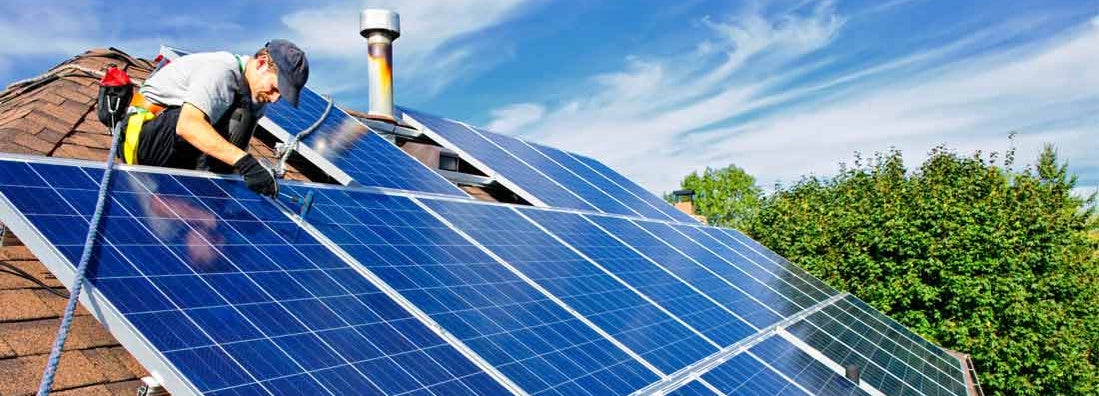A Tree-Huggin’ Guide to Eco-Friendly Homes

Livin’ a green, environmentally friendly life is more than just a trending fad. It’s a way to give back to the Earth and make sure that breathable air and those crystal-clear lakes stay that way. So whether you’re aiming to be a certified Momma Nature’s boy, or you just want to do your part, your home is a great place to focus your eco efforts.
And that’s why we’re here, to talk about eco-friendly homes: what they are, why they're important, and what kind of options you’ve got. But don't worry, if you're not looking to build a whole new eco-happy home from scratch, there's a fair share of things you can do around your current home to help get you on a greener path. Just make sure you're covered with an affordable home insurance policy.
What Is an Eco-Friendly Home?
An eco-friendly, or green, home is a house that has been built and/or designed using environmentally friendly materials and appliances. But being eco-friendly in your home doesn't necessarily mean your roof is covered with solar panels (even though this does count) or you use your toilet water twice (though it also counts).
It can be anything from using energy-efficient light bulbs and low-flow water fixtures, to using paint made from soy or installing large windows to let more natural light in.
What Features Do Eco-Friendly Homes Have?
A true eco-friendly home features environmentally cautious features within its design, construction, siting, operation and maintenance.
And although there’s a ton of ways you can help make your house eco-friendly, the seven most common features include:
- Rainwater storage
- Solar power
- Sustainable building materials
- Food gardens
- Recycling features
- High-efficiency lighting
- Temperature-regulating walls
Why Should I Build an Eco-Friendly Home?
Besides being the cool thing to do, there are a number of legit reasons for building a home that will make both you, and the planet, happy. Like:
- You're reducing your carbon footprint. Energy and gas efficiency mean less carbon being sent out into the world. Seeing as 40% of carbon emissions come from the construction industry, taking a sustainable approach to your build can help you not be part of that statistic.
- You'll be saving time and money. We could all use more time and money, especially when building a home. Consider shopping local for materials to reduce fuel costs for shipping and put money back into the local community. You can use a green home kit with prefabricated green building options to save time on your build.
- You're protecting your health. You may be surprised to hear that many homes are built out of materials that aren't on top of the “good for humans” list. If you wouldn't serve yourself unhealthy food for 30 years, why live in an unhealthy house?
Tips on How to Build an Eco-Friendly Home
One big benefit of building your own eco-friendly home is that you can work the right eco-friendly materials and appliances into the build from the very beginning.
The following tips from Breaking Energy will help you get started with an environmentally friendly build.
- Splurge for quality doors and windows: Poorly sealed doors and windows can negatively affect the air flow and temperature of your home, causing more energy use.
- Install an efficient duct system: According to Energystar.gov, 20% of air that flows through duct systems is lost due to leaks and poor connections.
- Get good insulation: Insulation controls the temperature of your home, and poor insulation can result in higher energy use.
- Splurge for efficient faucet fixtures: It's no secret that the world is facing a big clean water issue. You can do your part by investing in water-efficient faucet fixtures like electronic faucets.
- Get a fancy toilet: Toilets may only be for flushing but you can flush more efficiently. Dual-flush toilets allow for two flushing options, one for number one and one for number two. A family can save up to 80% on toilet water consumption by purchasing a dual-flush toilet.
- Consider your lighting: EnergyStar-certified light bulbs and fixtures use 75% less energy than traditional bulbs. They also last up to 25 times longer.
- Use recycled material: Since you’re building your own home, you have the ability to choose the most environmentally friendly materials out there. Consider rubber roofing, composite decking, paper-based counter tops and carpets made from recycled plastic bottles.
How Can I Make My Home Eco-Friendly?
Not everyone is in the market to build a brand-new eco-friendly home. That doesn't mean you can't take steps in your current home to help reduce your carbon footprint.
In general, making some eco-friendly changes can save you between 20% and 60% on your energy bill. From the simple to the bit more complicated, Apartment Therapy has a few suggestions to help make the Earth and your home total besties:
- Pick the proper wood: Look for certified sustainable wood furniture and use reclaimed wood when possible.
- Check your fabrics: Keep your eye out for organic cotton, humanely treated wool, and linen and hemp for natural fibers. If you’re shopping for synthetics, look for recycled polyester.
- Cut back on tree killing: Trade in those paper towels for cloth towels.
- Start to see the right light: LEDs are more environmentally friendly than incandescent bulbs.
- Save your scraps: Any time you do a project, save your leftover scraps and materials, they can be reused later.
- Trade in your chemical products: Nowadays, all-natural cleaners are as easy to find as a Starbucks on the corner. Spend some time replacing your chemical-filled products with all-natural cleaners.
- Purify the air: Invest in an air purifier and purifying plants.
- Double-check your recycling: Know your town’s rules and whether you can enhance your recycling.
- Opt for Zero VOC paint: Most wall paints contain volatile organic compounds (VOCs) that help paint spread easily. Unfortunately, VOCs also have some unhealthy chemicals. Shop for “Zero VOC” paints.
- Stay warm: Grab an extra blanket and your favorite pet, because the less you have to turn on your heat, the more efficient your energy use will be.
Whether you're building a new home or just looking to put a little more green into your current place, goin’ eco-friendly is a win-win for all. You, your home, and Ma Nature will all be happier and healthier. Good luck, Eco Warrior, and make sure you're covered with an affordable home insurance policy.
https://www.ecobob.co.nz/what-is-an-eco-home/
https://www.apartmenttherapy.com/10-easy-ways-to-make-your-home-eco-friendly-240147
https://breakingenergy.com/2014/03/21/how-to-build-an-environmentally-friendly-energy-efficient-home/
https://igozen.com/7-features-of-an-eco-friendly-home/
https://www.usgbc.org/articles/benefits-green-homebuilding
http://www.ecofriendlyhouses.net/
